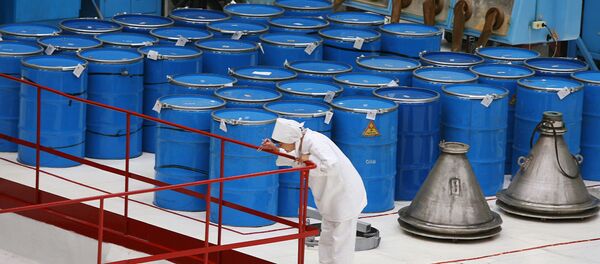New Delhi (Sputnik) — India's Department of Atomic Energy has outlined a three-phased uranium production plan with which it hopes to achieve a tenfold increase in uranium production in the next fifteen years to fuel the country's upcoming nuclear reactors and to meet the targeted 22,480 MW energy output.
"The uranium mining projects have been planned in three phases. On completion of the projects in the first phase, it is expected to produce 3.5 times more than the existing uranium production by the 12th year. On completion of the projects in the second phase, uranium production is expected to achieve seven times the existing production. Upon completion of phase three projects, uranium production in the country is expected to record a tenfold increase by 2031-32," Jitendra Singh, Minister of State for Atomic Energy said in Parliament on Thursday.
READ MORE: India in Talks with Several Countries to Build Strategic Nuclear Fuel Reserve
"It is not in the public interest to disclose the quantity of Uranium production from these mines," Jitendra Singh added.
India's state-owned Uranium Corporation of India Ltd. (UCIL) is operating seven uranium mines in the state of Jharkhand and one uranium mine in the state of Andhra Pradesh. The government admits that the extraction and processing cost of uranium in India is very high as compared to other countries. Other uranium-rich areas are yet to be explored in the lack of supporting infrastructure and poor logistics. Lack of technology, adverse socio-economic conditions, environmental aspects, are other factors contributing to the slackened process of mining of some of the deposits in Meghalaya, Rajasthan, Karnataka, and Telangana.
India presently ranks third in the number of nuclear reactors under construction after China and Russia and seventh in the number of reactors in operation. There are presently 59 reactors under construction in 17 countries with an aggregate capacity of 60,366 MW in the world as reported by the International Atomic Energy Agency (IAEA).
READ MORE: India Sets New Target for Nuclear Power Generation by 2024



